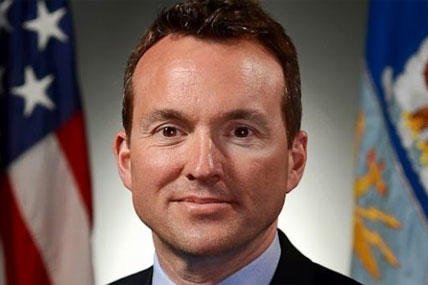Amid calls for adding more soldiers to the Army's ranks, the service's top official cautioned an incoming Trump administration to avoid judging the service purely by its size.
The service's active force is currently budgeted for 460,000 soldiers, a number that President-elect Donald Trump said he would grow to 540,000 soldiers if he was elected.
Secretary of the Army Eric Fanning, who will leave the post once Trump takes office on Jan. 20, said the Army is sized right now to operate as part of a joint force.
"There is no question that the Army is being worked hard," Fanning told an audience at the 4th Annual Defense One Summit on Thursday in Washington, D.C. "We cannot do what we are asked to do if we don't think as fully as possible as a joint force."
Service leaders have warned in the past that active force would ultimately have to go as low as 450,000 if automatic spending caps known as sequestration return after 2017.
Fanning acknowledged that the size of the active force was decided before "Russia was being so provocative on the border with Eastern Europe, before China was getting more provocative in the Pacific before we saw what ISIL was doing in Iraq and Syria, Fanning said, referring to the Islamic State of Iraq and Syria as the Islamic State of Iraq and the Levant.
"But I caution people to get away from thinking about this in terms of force structure numbers because that is the focus to not just be 450,000, but 490,000 or 520,000 or whatever," Fanning said.
"You could end up creating greater imbalance and actually lead to more hollowness because those people cost something, and we need to make sure that if we have that number that we also need to make sure that we also have money to keep them trained and equip them."
Fanning also pointed out that whatever number you increase the Army to will also affect the service's long-term modernization plan.
"So I think it is important that we don't oversimplify these things about the number of soldiers, the number of fighter squadrons, the number of carrier strike groups and think about them in the totality to have them and have them ready," Fanning said.
Ultimately this will be a decision of the Trump administration, and Fanning said he is ready to assist in that transition.
"Whenever they are ready to talk, we will do whatever they need us to do to make the transition as smooth as possible," Fanning said.
But Trump isn't the only one calling for a larger Army.
The Heritage Foundation, conservative think tank based in Washington, D.C., ranked the Army as "weak" and the other branches of services "marginal" when it comes to military power, according to its 2017 Index of U.S. Military Power.
The scores are based on the military's "capability or modernity, capacity for operations, and readiness to handle assigned missions successfully," the document states.
The group's Army assessment is the same from last year (the index began in 2015) and stems from the service's decision to decrease the size of the force and delay equipment upgrades to improve readiness -- yet only a third of its units are prepared for war, according to the document.
Heritage argues the size of the military must be increased to include 50 brigade combat teams in the Army.
-- Matthew Cox can be reached at matthew.cox@military.com.
Related Video:




























